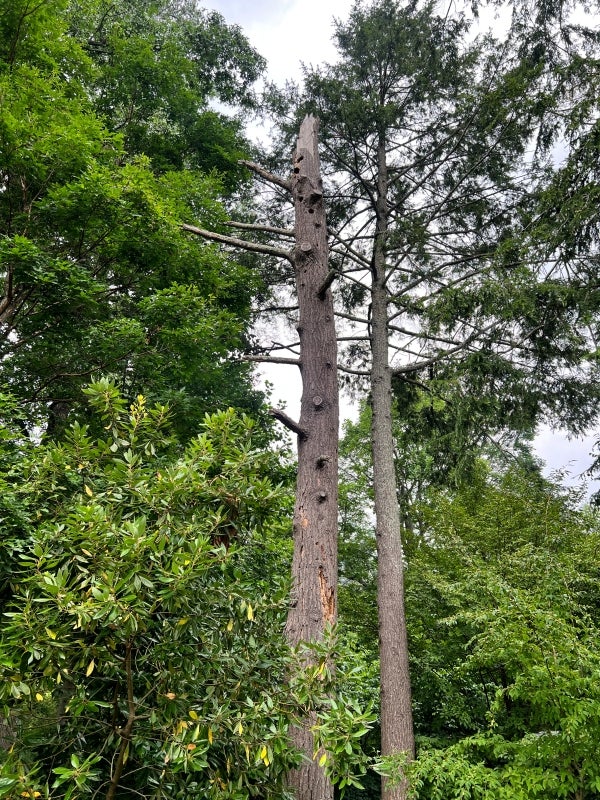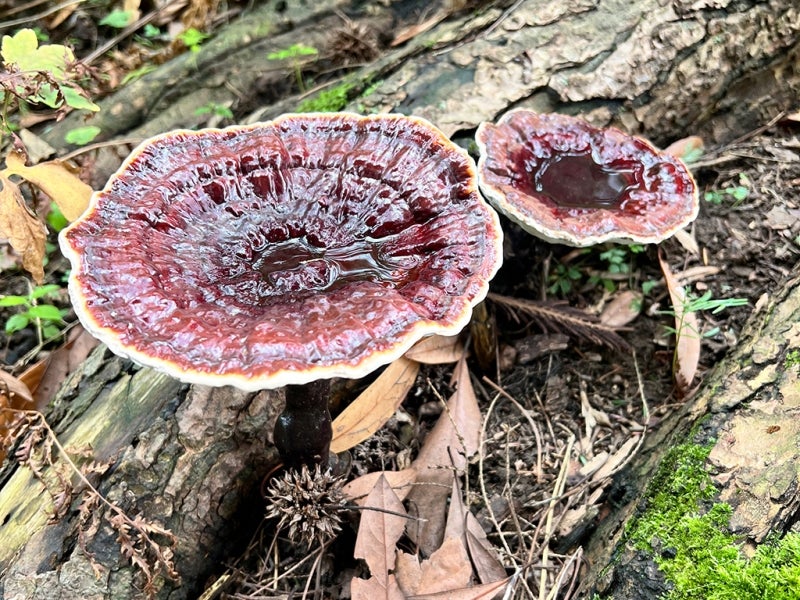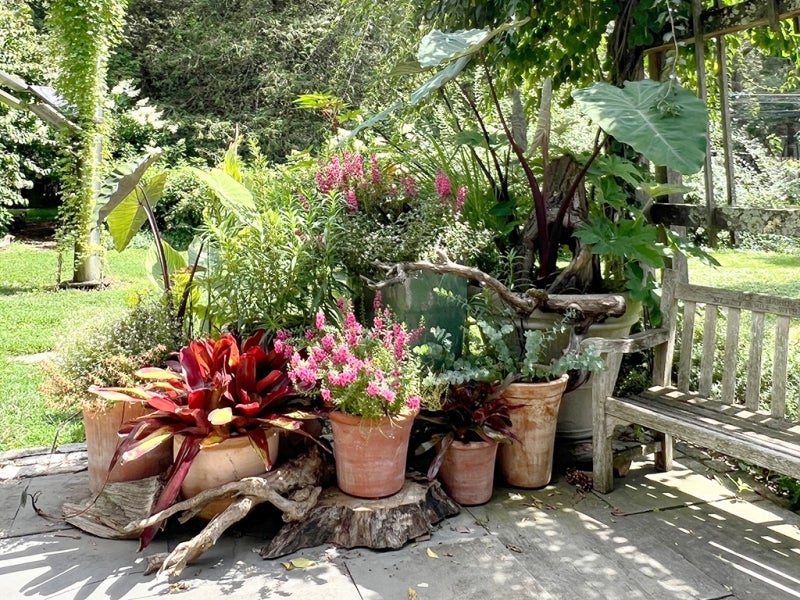The Afterlife of Trees: How Deadwood Can Resurrect Your Garden
When walking around Morris Arboretum & Gardens, you may notice the trunks of dead trees, also known as snags, protruding from between living trees. Or perhaps you’ve seen stump, branches, and other parts of felled trees used as garden borders and creative design. While bewitchingly befitting for ArBOOretum Month, we assure you this is not simply decor: The Morris incorporates deadwood from felled trees into our gardens not only as a natural way to add interest, but also to attract biodiversity and support the ecosystem.

Snags provide habitat and shelter for wildlife while also releasing nutrients into the soil as they decay. Take this eastern hemlock (Tsuga canadensis) snag (Figure 1), for example. It provides a home for animals and insects, insects provide meals for birds, and nutrients from the decaying wood enrich the soil. Notice the small holes in the trunk, presumably made by critters who moved in, and the mushrooms growing at the base that consume the complex organic material from the decaying tree (Figure 2)—a process that is essential to the forest ecosystem.
Living trees sequester carbon throughout their lifespans (sometimes for centuries) and they continue to do so after death. Deadwood such as stumps, logs, and standing snags also play a vital role in carbon storage. While trees begin to release carbon back into the environment upon dying, this process can be remarkably slow. Stumps may retain carbon for decades, and logs, depending on the species and environmental conditions, can continue to sequester carbon for centuries. This gradual release contrasts sharply with practices like wood-chipping, which rapidly returns nearly all stored carbon to the atmosphere in just a few years. Recognizing the value of deadwood in carbon sequestration highlights the importance of preserving tree structure, even after the trees die.

Throughout the Morris, you’ll find deadwood branches and other parts of felled trees in our garden designs. Rosarian Eloise Gayer has been using trimmed branches and parts of trees that fell this past spring to create edges along beds in her section (Figure 3). At the end of Oak Allée this summer, Azalea Meadow Horticulturist Trevor Schulte planted a container garden that incorporates branches and other deadwood into the design (Figure 4), a creative way to add eye-catching features while also providing insect habitat. And our Stumpery (located across from the Fernery) is a collection of deadwood and ferns.
